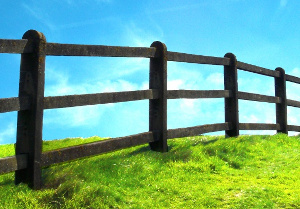Don't Be Tricked By SQQ
by
Sandi
& Dan Finch
You are told that foxtrot timing is SQQ, and so
is quickstep.
Then you learn that bolero is also SQQ, and at some point, you
are told that slow two step is SQQ. How can that be? Four
distinctly different rhythms with the same timing?
The reason the same timing can apply to various rhythms is that
timing doesn't tell you how to take a step, only the number of steps
that occur and over which beats. In this case, the slow takes
two beats of music and each quick represents one step on a
beat. The characteristics of each rhythm and even the music itself
tell you how to dance the slow and the quicks. Each of these
four rhythms look distinctly different, so you know you can't dance
SQQ the same way all the time.
 First, you have to understand beats. A beat (used interchangeably
with "count") is not just a "bong." Beat 1 begins
when an instrument plays it and the sound continues until the next
beat is played. Therefore a beat occurs over a span of time. Consider
a measure of music is like a section of fencing. Each fence post
represents a beat, and the distance between posts is the time each
beat lasts. In the photo, beat 1 starts with the first post and beat
2 starts at the second post. How you spend your time going from post
to post is up to you. You can step on a beat anywhere along its
"fence boards" to create different looks. Adding rise and
fall will also alter the look.
First, you have to understand beats. A beat (used interchangeably
with "count") is not just a "bong." Beat 1 begins
when an instrument plays it and the sound continues until the next
beat is played. Therefore a beat occurs over a span of time. Consider
a measure of music is like a section of fencing. Each fence post
represents a beat, and the distance between posts is the time each
beat lasts. In the photo, beat 1 starts with the first post and beat
2 starts at the second post. How you spend your time going from post
to post is up to you. You can step on a beat anywhere along its
"fence boards" to create different looks. Adding rise and
fall will also alter the look.
Bolero begins with a long slow step to the side, with rise at the end
of that step, but it is only a rise within the body. Slow two step
also has a long step to the side but with no rise, and the step back
and under is danced with a straight leg and only foot rise for lift.
No rise allows the body to sway.
Quickstep is intended to be danced with a light and airy feeling.
Poise is slightly forward for balance, on flexed knees, and the rise
and fall of each figure may differ, depending on whether it
originated as a foxtrot or waltz step. You will feel your center of
gravity is higher in the body to allow the legs more freedom to move.
Foxtrot is called the "dancer's dance" because it allows so
much freedom of expression while staying within a measure of music.
The goal is to dance it smoothly with a linear flow down line of
dance, in ways described as "sophisticated" and even
"oily." An experienced dancer will avoid the tendency to
step on beat 1, hold it through beat 2, and then step on beats 3 and
4. This creates an uncharacteristic stop and start. Instead, that
dancer will play with the timing, stepping somewhere on beat 1 or 2
while in flight, being aware of dancing heel to toe, and perhaps
stealing time from beat 4 for the first quick, to create a continuous
flow.
From a club
newsletter prepared by Dan
and Sandi Finch , February
2014, and
reprinted
in the Dixie Round Dance Council (DRDC)
Newsletter, February 2015.

|
